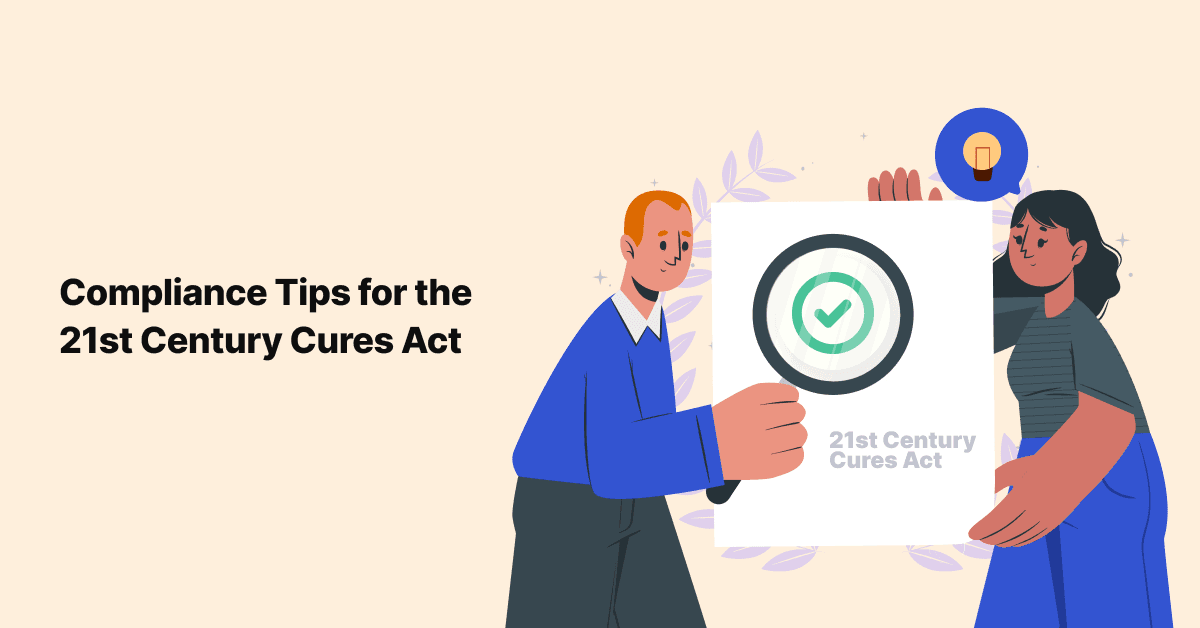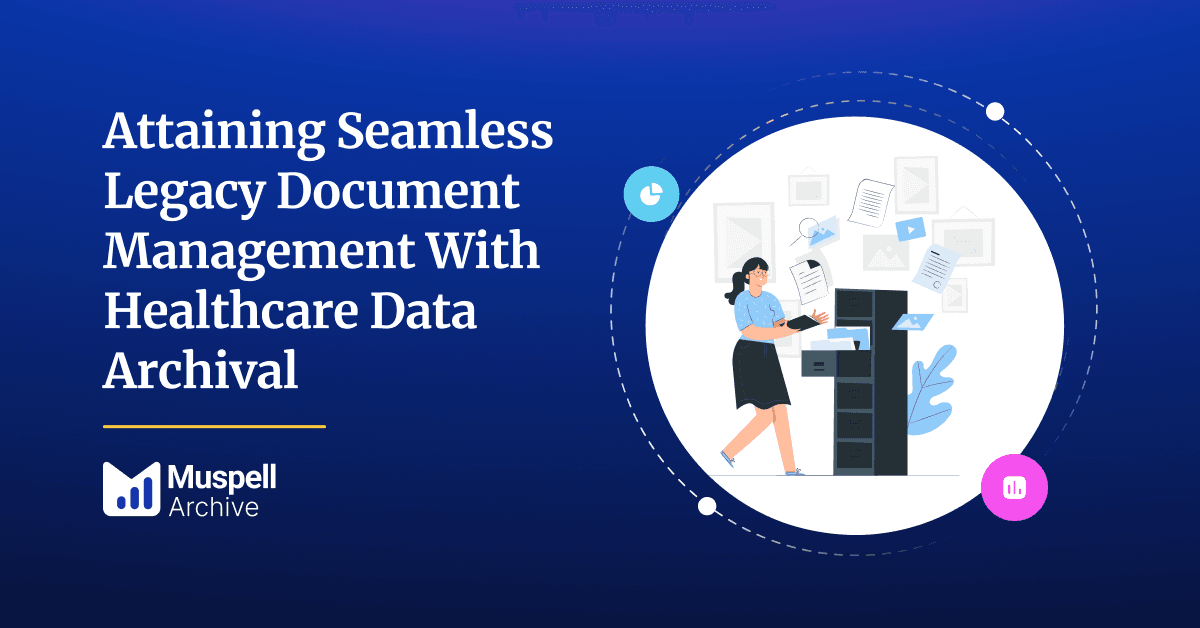
The 21st Century Cures Act Compliance Tips for Providers and Payers
The 21st Century Cures Act (“Cures Act”) was signed into law in December of 2016 with authorized funding of …

Legacy patient health data holds a wealth of information, including crucial historical insights, essential for research, analysis, and legal use. However, the evolution of healthcare technology underscores the pressing need for enhanced data security, leading healthcare institutions to often find themselves at a crossroads: how to effectively manage and secure this treasure trove of data?
Although numerous healthcare data archival solutions tout role-based security as a common attribute, the level of control within these roles may have significant room for improvement.
In this blog post, we'll explore Muspell Archive's 'dual-layered' security system, which harmoniously grants controlled access to authorized users and enables system administrators to safeguard legacy patient health information using meticulous user activity logs.
Access controls in a healthcare data archive solution serve as the ‘control room’ to ensure patient health information security. They enable healthcare institutions to regulate who can access archived data and what actions they can perform with it, mitigate unauthorized accesses, data breaches, and patient data misuse.
Most importantly, access controls facilitate compliance with regulatory requirements such as HIPAA, SOC2, ISO (9001 and 2001), and more. But what if a healthcare data archival solution complies with these regulations and delivers a granular approach to user permissions? Then, healthcare organizations benefit by allowing each user the bare minimum access based on their role and responsibilities.
Muspell Archive is an elegant system that comprises application screen control, access customization, and definition of user roles. Here’s a deeper look into its capabilities:
#1 Service User Access Control: System administrators benefit significantly from a solution that allows them to align designated personnel with the bare minimum access needed to view archived legacy health data based on their job roles. Different departments or teams often require access to specific data types or functionalities. Granular, service area-based control ensures that specific users only have access to the data and tools relevant to their roles, minimizing the risk of unauthorized access or data breaches.
Consider This: Members of your radiology department may need access to patient records, while administrative staff may only require access to billing information. Through user access control, your administrator can ensure clinicians have access only to designated patient records, not billing information. Similarly, administrative staff can be set up to only access the financial information associated with the patient, not the encounter details.
#2 User Access Control: Although not very different from service user access controls, user access controls enable system administrators to customize access based on application screens, document types, and settings. Despite being a part of a common service area, not all users within the organization must have the same level of access or require access to the same features. The user access control feature enables administrators to customize access for individual users based on their responsibilities and requirements.
Consider This: Your orthopedic teams may need access to patient records, diagnostic reports, and scan reports, but perhaps only certain members of that same team needaccess only to scanned reports. By tailoring access permissions, your healthcare organization can effectively maintain data confidentiality, integrity, and availability.
#3 New User Creation: Onboarding new users, such as internal staff or external collaborators, requires administrators to define their roles and access levels from the outset. Muspell Archive's new user creation feature streamlines new user additions while ensuring they can only access the necessary resources required to perform their job functions. Roles and access permissions during user setup allow the organization to maintain compliance with regulatory requirements and prevent unauthorized access to sensitive healthcare data.
Consider This: Your primary care physicians may have access to general patient information and diagnostic test results. At the same time, a specialist may require access to more specialized data related to their field. Your system administrators can use Muspell Archive to create user profiles to suit the legacy data access they need at a patient information level, giving them access to the minimum necessary legacy patient health information they need at all times.
Limiting user access is crucial for monitoring legacy patient health data, but it's equally essential for administrators to gain visibility into user actions. This is where Muspell Archive's second security layer comes into play, functioning as the eye in the sky for administrators, providing detailed insights into user interactions within the platform. Here's a closer look at Muspell Archive's reporting and log features:
#1 Audit Logs: Muspell Archive allows system administrators to tap into user activity reports and record their actions. This feature enables administrators to see users' “footprints in the sand”, giving them a comprehensive account of how much time they spent with legacy patient health records, and how they used this time. By gaining insights into user actions with detailed records of every interaction within the Muspell Archive, administrators get a comprehensive overview of system activity, empowering them to proactively identify and address potential security threats.
Consider This: Two different care teams reviewed a patient's historical data. In other cases, administrators would have to try to differentiate which team member accessed specific aspects of the patient's history. Muspell Archive's audit log functionality monitors and documents all user actions, allowing administrators to discern activity from each team member completely separately.
#2 Break the Glass Logs: Muspell Archive's "Break the Glass" feature allows authorized users to access sensitive patient health information while maintaining accountability and transparency. Muspell Archive tracks user activity and guides the designated users throughout the break the glass procedure to view classified or sensitive patient health information. It also records a detailed instance of the reasoning behind the user why the user needed to access that protected record.
Consider This: A celebrity patient sought care at the health organization in the past. Now, via Muspell Archive, it is very easy to see why the record would be accessed in real time, ensuring that only appropriate accesses are happening. If an inappropriate access occurs, administrators are able to see that activity quickly and take immediate action, regardless of how old the celebrity patient’s data may be.
#3 Release of Information Logs: Data exports are a common occurrence in healthcare, but they also pose a significant security risk if not properly monitored. Muspell Archive's Accounting of Disclosure Log tracks every instance of data export, including details such as the requester's identity and the exact patient information released. This level of transparency ensures administrators can track and monitor data exports effectively, mitigating the risk of unauthorized disclosures.
Consider This: A clinical researcher is utilizing your healthcare facility's resources to conduct research on Parkinson's disease, requiring access to various legacy health data systems containing information about patients with the condition. Your healthcare facility utilizes Muspell Archive to consolidate data from five legacy electronic health record (EHR) applications.
Whenever the researcher initiates document exports, Muspell Archive records timestamps, user details, requester information, and patient health data specifics. Without such a healthcare data archival application, would your administrators be capable of monitoring user activity with comparable efficiency and transparency?
#4 Purge Logs: Data retention policies are critical for compliance, but they can also pose challenges when managing and disposing of outdated or sensitive information. Muspell Archive's purge logs provide administrators with a comprehensive record of every data purge activity, including certificates of destruction showcasing records were destroyed in the normal course of business. Role-based access control further enhances security by allowing designated users to build patient lists and execute purges, ensuring data disposal processes adhere to organizational policies and regulatory requirements.
Consider This: A patient identity supervisor in charge of merging and purging patients' health records uses the archive to purge information about a deceased patient. Muspell Archive records a detailed account of the user who initiated the purge and its reasoning, along with what information has been destroyed and when it was purged.
Healthcare organizations must have confidence in their data storage and management solutions and feel secure that their sensitive information is protected from unauthorized access and breaches. With Muspell Archive, healthcare facilities get a comprehensive security blueprint that safeguards legacy health data and empowers organizations with the tools and insights needed to maintain compliance and mitigate risks effectively.
Explore Muspell Archive today!
Join over 3,200 subscribers and keep up-to-date with the latest innovations & best practices in Healthcare IT.

The 21st Century Cures Act (“Cures Act”) was signed into law in December of 2016 with authorized funding of …

At its core, healthcare data archival solutions serve as secure repositories for legacy electronic health …

The advent of protocols such as Fast Healthcare Interoperability Resources (FHIR) brings forth fresh …